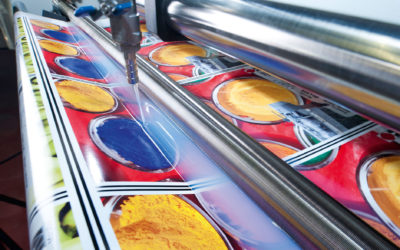Maintaining your laminating equipment is essential to ensuring high performance, longevity, and optimal output quality. Regular maintenance not only helps prevent costly downtime and repairs but also enhances the efficiency and reliability of your operations.
By following best practices for maintaining your laminating equipment, as outlined in this article, you can maximize the performance and lifespan of your laminators, leading to more efficient operations and higher-quality results.
The Importance of Regular Laminator Maintenance
Regular maintenance of laminating equipment is crucial for several reasons. Ensuring that your laminators are in top working condition can significantly impact the quality of your output and the overall efficiency of your operations. Here are some key reasons why regular maintenance is essential:
- Enhanced Performance: Maintaining your laminating equipment ensures it operates at its peak performance.
- Extended Lifespan: Just like any other piece of machinery, laminators have components that wear out over time.
- Reduced Downtime: Unexpected breakdowns can cause significant disruptions to your workflow.
- Lower Repair Costs: Regular maintenance can save you money by reducing the need for expensive repairs.
- Improved Safety: Well-maintained equipment is safer to operate.
- Consistent Quality: Regular maintenance ensures that your laminators produce high-quality results every time, maintaining the standards your clients expect.
By prioritizing regular maintenance, you can keep your laminating equipment running efficiently and effectively. This proactive approach not only enhances the performance and longevity of your laminators but also contributes to a more productive and profitable operation.
Best Practices for Laminating Equipment Maintenance
Maintaining laminating equipment involves a series of regular tasks designed to keep your machines running smoothly and efficiently. Here are some best practices to ensure your laminating equipment remains in top condition.
- Removing Excess Laminate: After each use, remove any excess laminate from the machine. This prevents buildup that can cause uneven application and potential jams. Use a foam brush or sponge to push excess laminate into the trough, ensuring no residue remains on the rollers or other parts.
- Inspecting for Visible Issues: Conduct a quick visual inspection of the machine before and after use. Look for any signs of wear, damage, or debris that could affect performance.
- Ensuring All Parts are Clean and Free from Debris: Wipe down the machine, particularly the rollers, metering rod, and troughs, to remove any dust or debris. Make sure the laminating liquid reservoir is clean and free of contaminants.
- Thorough Cleaning of Critical Components: Periodically perform a more detailed cleaning of key parts such as the metering rods, troughs, and rollers. Remove the metering rod, immerse it in water, and use a sponge to clean off any remaining laminate. Light scrubbing may be necessary, especially on the ends.
- Checking the Condition of Rollers and Other Moving Parts: For example, inspect any rollers for any signs of wear or damage. Look for cracks, warping, or other issues that could affect their function. Ensure all moving parts are operating smoothly without unusual noises or resistance.
- Keep a Maintenance Log: Maintain a detailed log of all maintenance activities. This log should include your cleanings after each use, as well as any repairs or part replacements. Documenting performed tasks helps identify patterns and recurring issues, making it easier to diagnose and address problems before they escalate.
By incorporating these laminating equipment tips into your maintenance routine, you can keep your laminating equipment in excellent condition. Regular maintenance helps prevent issues, prolongs the lifespan of your equipment, and ensures consistent, high-quality output.
Example Daily Cleaning Checklist
Cleaning your laminator after each use doesn’t have to be a burdensome task. In fact, it can be a simple process with just a few steps! For example, here are the steps for daily cleaning for the Marabu Starlam 1600R laminator’s reservoir and supply lines:
- Pump all remaining laminate back into the reservoir. Then disconnect the reservoir and pour the laminate back into the original container. Reconnect the reservoir into its holder.
- Connect the cleaning hose to the Cleaning Quick Connect in front of the left box.
- Turn on the cleaning pump and, while holding the end of the cleaning hose, fill the reservoir with water (this water is from the wash trough).
- Once the reservoir is full, turn off the cleaning pump and open the fluid nozzle to release the water from the reservoir.
- Drain the remaining water from the wash trough by pumping into an empty bucket.
- When the reservoir is empty, close the fluid nozzle and turn the Feed Liquid switch on to return the water to the reservoir.
- Once all the water has returned to the reservoir, disconnect and discard water.
- Remove 2 T-filters and 2 screen filters and rinse with water, then reattach.
- For a more thorough cleaning, fill the reservoir with clean hot water and re-rinse the supply lines as described above.
That’s it! For a major piece of technology, it’s a simple process that will keep your equipment working at its best.
When to Seek Professional Maintenance or Technical Support
While many issues can be resolved through routine maintenance and troubleshooting, some problems may require professional assistance. Here are some signs that it’s time to seek help from a technician or the manufacturer’s support team:
- Persistent Issues: If you repeatedly encounter the same problem despite following troubleshooting steps, it may indicate a deeper issue that requires expert diagnosis and repair.
- Unusual Noises: Strange sounds such as grinding, squealing, or knocking can signal mechanical problems. These noises should be investigated by a professional to prevent further damage.
- Electronic Malfunctions: Problems with the laminator’s electronic components, such as unresponsive controls or error messages, often require specialized knowledge and tools to fix.
- Significant Wear and Tear: If key components like rollers, belts, or gears show significant wear or damage that impacts performance, it’s best to have a professional assess and replace them as needed.
- Safety Concerns: Any issues that compromise the safety of the equipment, such as faulty emergency stops or malfunctioning safety guards, should be addressed by a professional immediately.
Regularly maintaining your laminating equipment and promptly addressing any issues that arise can keep your operations running smoothly. By following these troubleshooting tips and knowing when to seek professional help, you can ensure your laminators continue to produce high-quality results efficiently.
Conclusion
By following these best practices for the maintenance and care of laminating equipment, owners and operators can ensure optimal performance, reliability, and longevity for these valuable assets.
Implementing a proactive maintenance routine helps minimize downtime and repair costs, and ensures consistent, high-quality output. Successfully achieving these goals will ultimately drive productivity and profitability in industrial printing operations.
Marabu is renowned for developing and manufacturing top-quality products, including liquid laminates and inks for large and grand format digital printing, screen, and pad printing inks, as well as application fluids and adhesive removers. Visit our website today for more information about our services and products!




